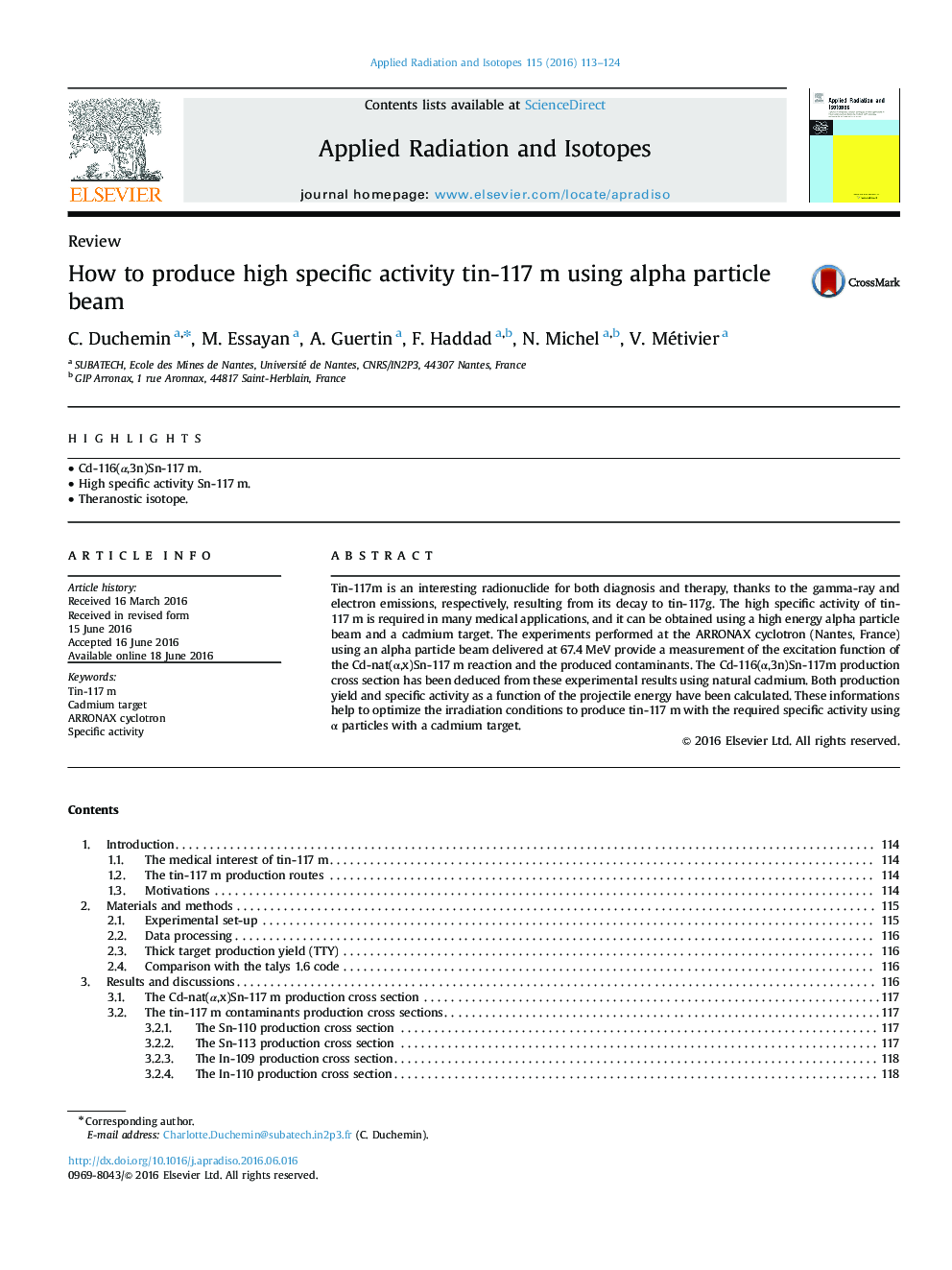| Article ID | Journal | Published Year | Pages | File Type |
|---|---|---|---|---|
| 8209011 | Applied Radiation and Isotopes | 2016 | 12 Pages |
Abstract
Tin-117m is an interesting radionuclide for both diagnosis and therapy, thanks to the gamma-ray and electron emissions, respectively, resulting from its decay to tin-117g. The high specific activity of tin-117 m is required in many medical applications, and it can be obtained using a high energy alpha particle beam and a cadmium target. The experiments performed at the ARRONAX cyclotron (Nantes, France) using an alpha particle beam delivered at 67.4 MeV provide a measurement of the excitation function of the Cd-nat(α,x)Sn-117 m reaction and the produced contaminants. The Cd-116(α,3n)Sn-117m production cross section has been deduced from these experimental results using natural cadmium. Both production yield and specific activity as a function of the projectile energy have been calculated. These informations help to optimize the irradiation conditions to produce tin-117 m with the required specific activity using α particles with a cadmium target.
Keywords
Related Topics
Physical Sciences and Engineering
Physics and Astronomy
Radiation
Authors
C. Duchemin, M. Essayan, A. Guertin, F. Haddad, N. Michel, V. Métivier,
